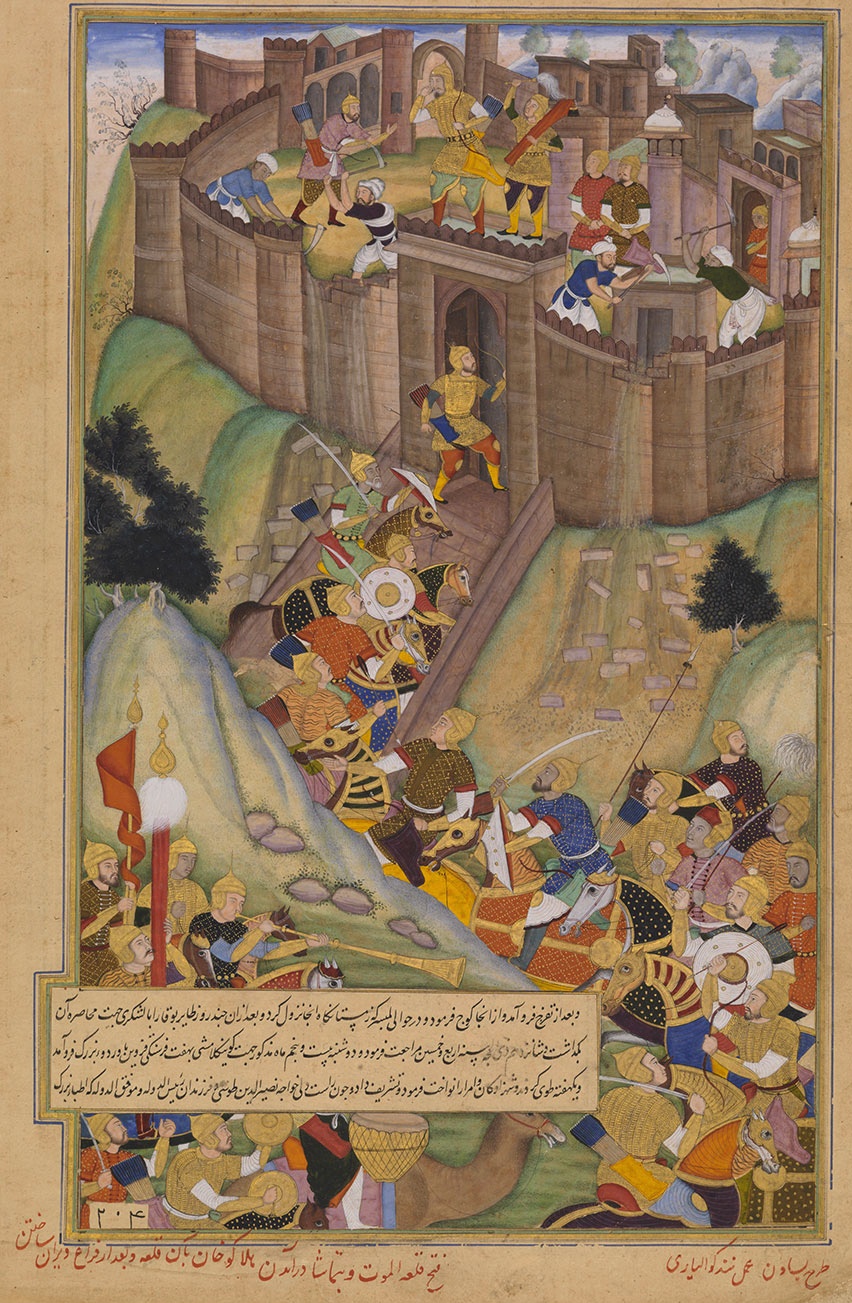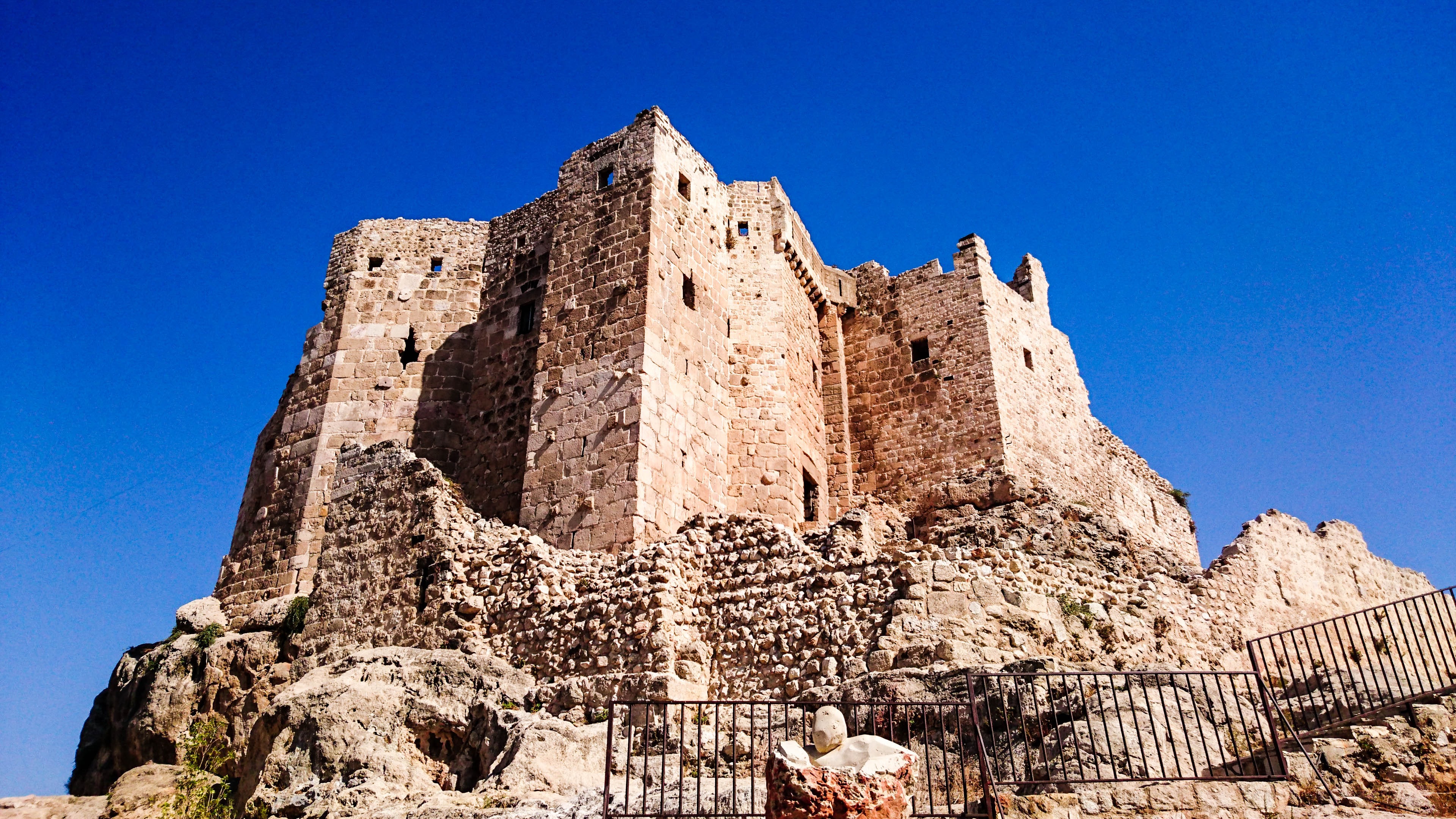|
Tāj Al-Mulūk Būrī
Taj al-Muluk Buri ( ar, تاج الملوك بوري; died 6 June 1132) was an atabeg of Damascus from 1128 to 1132. He was initially an officer in the army of Duqaq, the Seljuk ruler of Damascus, together with his father Toghtekin. When the latter took power after Duqaq's death, Buri acted as regent and later became atabeg himself. Damascus's Burid dynasty was named for him. Biography Buri is mentioned for the first time in 1099, when Duqaq sent him to take possession of Jableh, a town between Antioch and Tripoli which had rebelled against Fakhr al-Mulk ibn 'Ammar, ''qādī'' of Tripoli. Buri however acted as a despotic governor and the population appealed to Fakhr al-Mulk ibn 'Ammar, who captured him. Buri was however treated well and send back to Damascus. In 1102, Raymond of Saint-Gilles besieged Tripoli. Fakhr al-Mulk sued for help to Damascus, but in vain. In 1104 Duqaq died and the power went to his vizier Toghtekin. In 1108 Fakhr al-Mulk went to Baghdad to obtain ... [...More Info...] [...Related Items...] OR: [Wikipedia] [Google] [Baidu] |
List Of Rulers Of Damascus
This is a list of rulers of Damascus from ancient times to the present. :''General context: History of Damascus''. Aram Damascus * Rezon I (c. 950 BC) *Tabrimmon *Ben-Hadad I (c. 885 BCE–c. 865 BC) *Hadadezer (c. 865 BC–c. 842 BC) *Hazael (c. 842 BC–c. 804 BC) *Ben-Hadad III (c. 796 BC) *Tab-El (c. 770 BC) *Rezon II (c. 740 BC–732 BC) Period of non-independence *to Assyria (732 BC–609 BC) **Ilu-Ittia (c. 8th century BC) *to Babylon (609 BC–539 BC) *to Persian Achaemenid Empire (539 BC–332 BC) *to Macedon (332 BC–323 BC) *to Antigonids (323 BC–301 BC) *to Ptolemaic Kingdom (301 BC–198 BC) *to Seleucids (198 BC–167 BC) *to Ituraea (167 BC–110 BC) (Semi independent from Seleucids) *to the Decapolis (110 BC–85 BC) (Semi independent from Seleucids) *to Nabataea (85 BC–64 BC) *to the Roman Republic/Roman Empire/Byzantine Empire (64 BC–635) **to the Ghassanids (529–584; ?–635) Rashidun period *Khalid ibn al-Walid (635–636) *Abu Ubaidah ibn al Jarrah ... [...More Info...] [...Related Items...] OR: [Wikipedia] [Google] [Baidu] |
Turkic Rulers
Turkic may refer to: * anything related to the country of Turkey * Turkic languages, a language family of at least thirty-five documented languages ** Turkic alphabets (other) ** Turkish language, the most widely spoken Turkic language * Turkic peoples, a collection of ethno-linguistic groups ** Turkic migration, the expansion of the Turkic tribes and Turkic languages, mainly between the 6th and 11th centuries ** Turkic mythology ** Turkic nationalism (other) ** Turkic tribal confederations See also * * Turk (other) * Turki (other) * Turkish (other) * Turkiye (other) * Turkey (other) Turkey is a country in Asia and Europe. Turkey may also refer to: Birds * Turkey (bird), the genus ''Meleagris'', including several species of large birds native to North America and Central America **Ocellated turkey, native to the Yucatán ** ... * List of Turkic dynasties and countries {{disambiguation Language and nationality ... [...More Info...] [...Related Items...] OR: [Wikipedia] [Google] [Baidu] |
Muslims Of The Crusades
Muslims ( ar, المسلمون, , ) are people who adhere to Islam, a monotheistic religion belonging to the Abrahamic tradition. They consider the Quran, the foundational religious text of Islam, to be the verbatim word of the God of Abraham (or ''Allah'') as it was revealed to Muhammad, the main Islamic prophet. The majority of Muslims also follow the teachings and practices of Muhammad (''sunnah'') as recorded in traditional accounts (''hadith''). With an estimated population of almost 1.9 billion followers as of 2020 year estimation, Muslims comprise more than 24.9% of the world's total population. In descending order, the percentage of people who identify as Muslims on each continental landmass stands at: 45% of Africa, 25% of Asia and Oceania (collectively), 6% of Europe, and 1% of the Americas. Additionally, in subdivided geographical regions, the figure stands at: 91% of the Middle East–North Africa, 90% of Central Asia, 65% of the Caucasus, 42% of Southeast Asia, ... [...More Info...] [...Related Items...] OR: [Wikipedia] [Google] [Baidu] |
1132 Deaths , synthetic chemical element with atomic number 113
{{Numberdis ...
113 may refer to: *113 (number), a natural number *AD 113, a year *113 BC, a year *113 (band), a French hip hop group *113 (MBTA bus), Massachusetts Bay Transportation Authority bus route *113 (New Jersey bus), Ironbound Garage in Newark and run to and from the Port Authority bus route See also * 11/3 (other) *Nihonium Nihonium is a synthetic chemical element with the symbol Nh and atomic number 113. It is extremely radioactive; its most stable known isotope, nihonium-286, has a half-life of about 10 seconds. In the periodic table, nihonium is a transactinid ... [...More Info...] [...Related Items...] OR: [Wikipedia] [Google] [Baidu] |
11th-century Births
The 11th century is the period from 1001 ( MI) through 1100 ( MC) in accordance with the Julian calendar, and the 1st century of the 2nd millennium. In the history of Europe, this period is considered the early part of the High Middle Ages. There was, after a brief ascendancy, a sudden decline of Byzantine power and a rise of Norman domination over much of Europe, along with the prominent role in Europe of notably influential popes. Christendom experienced a formal schism in this century which had been developing over previous centuries between the Latin West and Byzantine East, causing a split in its two largest denominations to this day: Roman Catholicism and Eastern Orthodoxy. In Song dynasty China and the classical Islamic world, this century marked the high point for both classical Chinese civilization, science and technology, and classical Islamic science, philosophy, technology and literature. Rival political factions at the Song dynasty court created strife amongst ... [...More Info...] [...Related Items...] OR: [Wikipedia] [Google] [Baidu] |
Shams-ul-Mulk Isma'il
Shams al-Mulk Isma'il (1113 – February 1, 1135) was the Burid atabeg (or Seljuk ruler) of the Emirate of Damascus from 1132 to 1135. Early life Shams al-Mulk Isma'il, born in 1113, was the son of Taj al-Muluk Buri, the atabeg of Damascus, and his wife Zumurrud. Two Assassins wounded Buri in the stomach in May 1132 in revenge for the massacre of their fellows in Damascus. Buri suffered for 13 months before he died in June 1133. Ismail succeeded his father and decided to seize Banias, which had previously been taken by Baldwin II of Jerusalem with the Assassins' assistance. Ismail attacked Banias and captured it on 11 December 1132. Ailba, a female slave of Ismail's grandfather, Toghtekin, made an attempt on Ismail's life in 1134. After being captured, she listed the names of many peoples who desired Ismail's death because of his tyrannical acts. He ordered the arrest of the alleged conspirators, including his half-brother, Sawinj, who starved to death in the prison. Fearing for ... [...More Info...] [...Related Items...] OR: [Wikipedia] [Google] [Baidu] |
Alamut Castle
Alamut ( fa, wikt:الموت, الموت, meaning "eagle's nest") is a ruined mountain fortress located in the Alamut region in the South Caspian Sea, Caspian province of Qazvin near the Masudabad, Qazvin, Masoudabad region in Iran, approximately 200 km (130 mi) from present-day Tehran. In 1090 AD, the Alamut Castle, a mountain fortress in present-day Iran, came into the possession of Hassan-i Sabbah, a champion of the Nizari Isma'ilism, Nizari Ismaili cause. Until 1256, Alamut functioned as the headquarters of the Nizari Ismaili state, which included a series of List_of_Ismaili_strongholds, strategic strongholds scattered throughout Persia and Syria, with each stronghold being surrounded by swathes of hostile territory. Alamut, which is the most famous of these strongholds, was thought impregnable to any military attack and was fabled for its heavenly gardens, library, and laboratories where philosophers, scientists, and theologians could debate in intellectual freedom. ... [...More Info...] [...Related Items...] OR: [Wikipedia] [Google] [Baidu] |
Abu Ali Tahir Ibn Sa'id Al-Mazadaqani
Abu or ABU may refer to: Places * Abu (volcano), a volcano on the island of Honshū in Japan * Abu, Yamaguchi, a town in Japan * Ahmadu Bello University, a university located in Zaria, Nigeria * Atlantic Baptist University, a Christian university located in Moncton, New Brunswick, Canada * Elephantine, Egypt, known as Abu to the Ancient Egyptians * A. A. Bere Tallo Airport (IATA: ABU), in Atambua, Indonesia * Mount Abu, the highest mountain in the Indian state of Rajasthan People * Abu (Arabic term), a component of some Arabic names * Ab (Semitic), a common part of Arabic-derived names, meaning "father of" in Arabic * Abu al-Faraj (other) * Abu Baker Asvat, a murdered South African activist and medical doctor * Abu Ibrahim (other) * Abu Mohammed (other) * Abu Salim (other) *Abdul-Malik Abu (born 1995), American basketball player in the Israeli Premier Basketball League * Raneo Abu, Filipino politician Other uses * Abu (god), a minor god of vege ... [...More Info...] [...Related Items...] OR: [Wikipedia] [Google] [Baidu] |
Crusade Of 1129
The Crusade of 1129 or the Damascus Crusade was a military campaign of the Kingdom of Jerusalem with forces from the other crusader states and from western Europe against the Emirate of Damascus. The brainchild of King Baldwin II of Jerusalem, the crusade failed to meet its military objectives. Its diplomatic preliminaries, however, secured the succession to the throne of Jerusalem and papal backing for the Knights Templar. Planning Diplomacy Baldwin II launched raids into Damascene territory in 1125 and 1126. These convinced him that he needed outside support to take the city. For this purpose he sent three embassies to western Europe in 1127–1128. Steven Runciman argued that the death of Ṭughtigin, emir of Damascus, on 11 February 1128 caused Baldwin to plan another attempt on Damascus, but the evidence that an embassy had already been sent in 1127 suggests that the decision had already been made. Neither did Baldwin campaign in 1127 or 1128, which further suggests that he ... [...More Info...] [...Related Items...] OR: [Wikipedia] [Google] [Baidu] |
Order Of Assassins
The Order of Assassins or simply the Assassins ( fa, حَشّاشین, Ḥaššāšīn, ) were a Nizārī Ismāʿīlī order and sect of Shīʿa Islam that existed between 1090 and 1275 CE. During that time, they lived in the mountains of Persia and in Syria, and held a strict subterfuge policy throughout the Middle East through the covert murder of Muslim and Christian leaders who were considered enemies of the Nizārī Ismāʿīlī State. The modern term assassination is believed to stem from the tactics used by the Assassins. Nizārī Ismāʿīlīsm formed in the late 11th century after a succession crisis within the Fatimid Caliphate between Nizār ibn al-Mustanṣir and his half-brother, caliph al-Musta‘lī. Contemporaneous historians include Arabs ibn al-Qalanisi and Ali ibn al-Athir, and the Persian Ata-Malik Juvayni. The first two referred to the Assassins as ''batiniyya'', an epithet widely accepted by Ismāʿīlīs themselves. Overview The Nizari Isma'il ... [...More Info...] [...Related Items...] OR: [Wikipedia] [Google] [Baidu] |
Battle Of Marj Al-Saffar (1126)
The Battle of Marj al-Saffar was fought on January 25, 1126 between a Crusader army led by King Baldwin II of Jerusalem and the Seljuk Emirate of Damascus, which was ruled by Toghtekin. The Crusaders defeated the Muslim army in the field but failed in their objective to capture Damascus. Background After winning the Battle of Azaz northeast of Antioch, Baldwin II led an army of Franks to attack Damascus in early 1126. Baldwin's army consisted of the usual mounted knights and men-at-arms supported by spearmen and bowmen on foot. At Marj al-Saffar, 30 kilometers outside Damascus,Burns, p 150 the Crusaders encountered the army of Damascus which offered battle. Toghtekin, founder of the Burid dynasty, ruled Damascus at that time. Battle Only a few details are known about the battle. The sources are not in agreement about tactical details, but they concur that the Crusaders failed to seize Damascus. The Franks lost many men to Turkish archery in a very close-fought engagement. "B ... [...More Info...] [...Related Items...] OR: [Wikipedia] [Google] [Baidu] |


